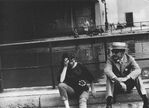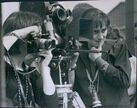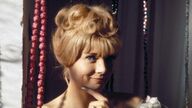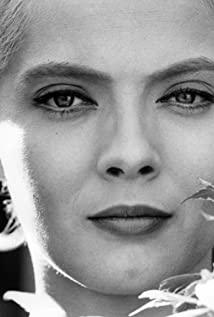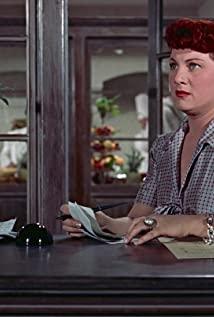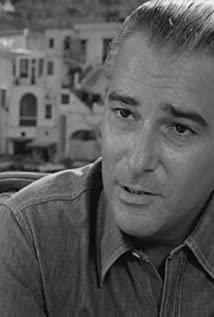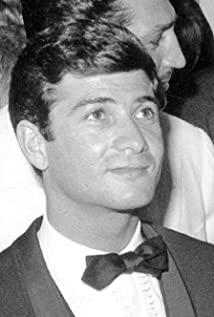The original inspiration came from a painting:
The name is "Girl and Death", and the painter's name is Hans Galdung Grien. He is an apprentice of Albrecht Durer. The painting style and theme are very typical of the early Northern Renaissance. A naked woman, with tears streaming down her face, was coerced by a skeleton pulling her hair with one hand and hugged with the other.
Well, to a certain extent, yes, Cleo was worried about bad news and death, although the styles were very different.
The title and length of the film, 5 to 7 o'clock:
The title of the film is "5 to 7 o'clock", but in fact it is only from 5 to 6:30; the title is so called because there is an expression in French called le cinq a sept, literally translated From five to seven, it means happy hour in English-speaking countries in Quebec (after work, before dinner, to have a drink with colleagues and friends), and in France it means tryst and cheating. Although Varda said that it was named so for the sake of sound.
Every minute in the film corresponds to a minute in reality, the so-called real time. This caused a lot of trouble shooting and editing. Varda said that the real time was chosen because, in almost all movies, a person picks up a suitcase in one shot, and the next shot cuts to this person looking out from the train, and we as the audience don’t need to know what happened in the middle to make up our minds right away. The relationship between shot 1 and shot 2; but this is not the case in reality. In reality, we have to go out of the house, get on a taxi, wait, get off a taxi, and get on the platform. In reality, we will come into contact with passers-by, hear The conversation of passer-by B. And these are also what we can see in "Five". From this point of view, the film is objective (see below, subtitle 3).
Passerby A in the film is the turning point:
when I watch the film, I think the composition of the camera is very interesting, the main character - or the focus of the plot - is often not in the center of the painting, not even in the center of the 2/3 of the painting, but is pushed to the left 1/3 (Picture 1) or 1/4 of the bottom (Picture 2). On the contrary, there are many passers-by in the blanks of these compositions, and we can sometimes be privy to their dialogues and even inner monologues.
Varda said that most of these passers-by appear in the middle 45 minutes of the film, and this is also when Cleo takes off his pajamas, takes off his wig, and stops focusing on himself. After that, she observed passers-by on the street, in cafes, at the station entrance, and let a strange soldier approach her. Varda says it's these concerns outside of himself that make Cleo comfortable.
This is an objective story, this is a subjective story:
Varda said she went to the hospital waiting room to sit, watch passerby A, and listen to their conversations (much like Cleo), so this is an objective story. Jonathan Rosenbaum believes that the description of the passerby in the film, and even the description of the Paris neighborhood park, is almost like a documentary.
After that, based on the experience of this documentary class, Varda went back to write the script, and then it rose to fiction and subjective.
Speaking of how the story of Godard and Anna Karina came about:
it was Cleo and his friend who walked into the screening room of his friend's boyfriend and watched the silent film. Here is the video:
Godard always wears sunglasses, where is he going ? Also, it's annoying to die, so I say you just repeat such a story.
This is a question from the audience, and there are two or three people boo in the field immediately after asking.
It's a feminist work:
Varda thinks it's a feminist work because (I think it's kind of blind) after 45 minutes Cleo starts to step out of that short-sighted, overly egoistic focus and go out into the world.
Why is it colored at the beginning?
Don't ask me, Varda said, I don't know either.
In fact, Rosenbaum says, the fortune teller sums up the whole movie: She has a good protector (a maid), a boyfriend who cares about her but doesn't have time, and meets a stranger in the future.
Varda finds it a novelty and delight for so many people -- especially young people -- to see her films from so many years ago
Varda's sense of humor is very French, very cold and very sharp:
(At least I think it is very French, my perception of French humor purely comes from here ) For
example, a little sister in the audience asked her: the barman brought her water, she hoped from Men's attention, her boyfriend loves her but always has no time, the male composer disdains her singing skills, the male doctor is not punctual, and finally a male soldier helps her inadvertently; What do you think?
Varda replied: I think the last male soldier is pretty good, is it rare that you don't like him?
The audience's little sister said, no no, you just said you think it's a feminist movie, so in a way, all the men in the movie define Cleo?
Varda said: Ah, okay, here's your theory.
The little sister looked embarrassed at this time.
View more about Cléo from 5 to 7 reviews



